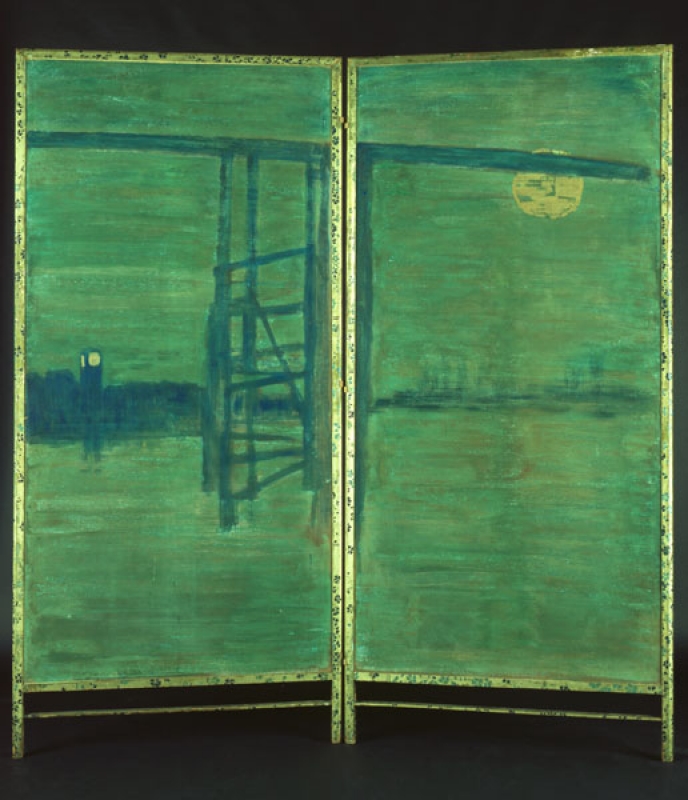Provenance
- 1879: it is not known what happened to the screen at the time of Whistler's bankruptcy.
- 1880s: the screen was deposited with Messrs Dowdeswell, London art dealers;
- 1890: returned by Charles William Dowdeswell (1832-1915) to Whistler;
- 1903: in Whistler's studio at his death and bequeathed to his ward and executrix Rosalind Birnie Philip (1873-1958) ;
- 1958: bequeathed by Miss R. Birnie Philip to the University of Glasgow.
According to the Pennells, whose informant was Walter Greaves (1846-1930), the screen was 'painted for Leyland but always kept for himself.' 1 Whistler's patron Frederick Richards Leyland (1832-1892) had commissioned portraits of himself and his family, but the screen is not mentioned in correspondence.
The screen was deposited with the art dealers Messrs Dowdeswell, in London, possibly when they held exhibitions of Whistler's work, in 1884 or 1886. There appears to have been a misunderstanding about the status of the deposit. When Whistler asked for it to be returned, Charles William Dowdeswell (1832-1915) wrote, on 6 December 1890:
'... as you are I believe anxious to have the screen at once, I enclose my Card for your use at your convenience I would just say that we have been under the belief that the Screen was a present in the place of a Commission on a picture sold to an American for 60 Guineas, whom Walter took down to you one day in a Cab - We are of course sorry we misunderstood the position.' 2
The chilly tone of this letter was in great contrast to the protest from Walter Dowdeswell (1858-1929) who wrote, 'What is this they write me from London about the screen? Do you want to break all our hearts? You cannot have it!' 3 Although Whistler did get it back, he appears to have been rather casual about his possessions. According to Walford Graham Robertson (1867-1948), when Whistler moved to Paris a couple of years later, he left behind 'The lovely and beloved screen that stood in the yellow dining-room' but omitted to leave his last quarter's rent or a forwarding address with the estate agents, and it was saved by the intervention of Robertson, who asked Whistler's frame maker to put it in his storeroom. 4 This story may have been exaggerated. The Whistlers left the Tower House, Tite Street, for 110 rue du Bac in 1892.
An oil, Harmony in Blue and Gold: The Little Blue Girl [YMSM 421], started in Paris in 1893/1894, includes the screen. Furthermore, a later photograph by M. Dornac shows Whistler sitting in front of the screen in Paris.
Whistler considered trying to complete Harmony in Blue and Gold: The Little Blue Girl on his return from Corsica in 1901, but the screen was still in Paris, and would have to be sent to his studio in Fitzroy Street: 'I might perhaps manage it in London - more quietly - but that would require bringing over blue screen', he told his sister-in-law. 5 Whistler closed up the studio in Paris soon afterwards and everything was returned to London at that time.
Exhibitions
- 1874: Mr Whistler's Exhibition, Flemish Gallery, 48 Pall Mall, London, 1874 (not numbered) as 'Screen – Blue and Silver'.
It was exhibited in Whistler's one-man exhibition at the Flemish Gallery in 1874 with some of the pastel studies related to the composition.
Last updated: 28th December 2020 by Margaret







